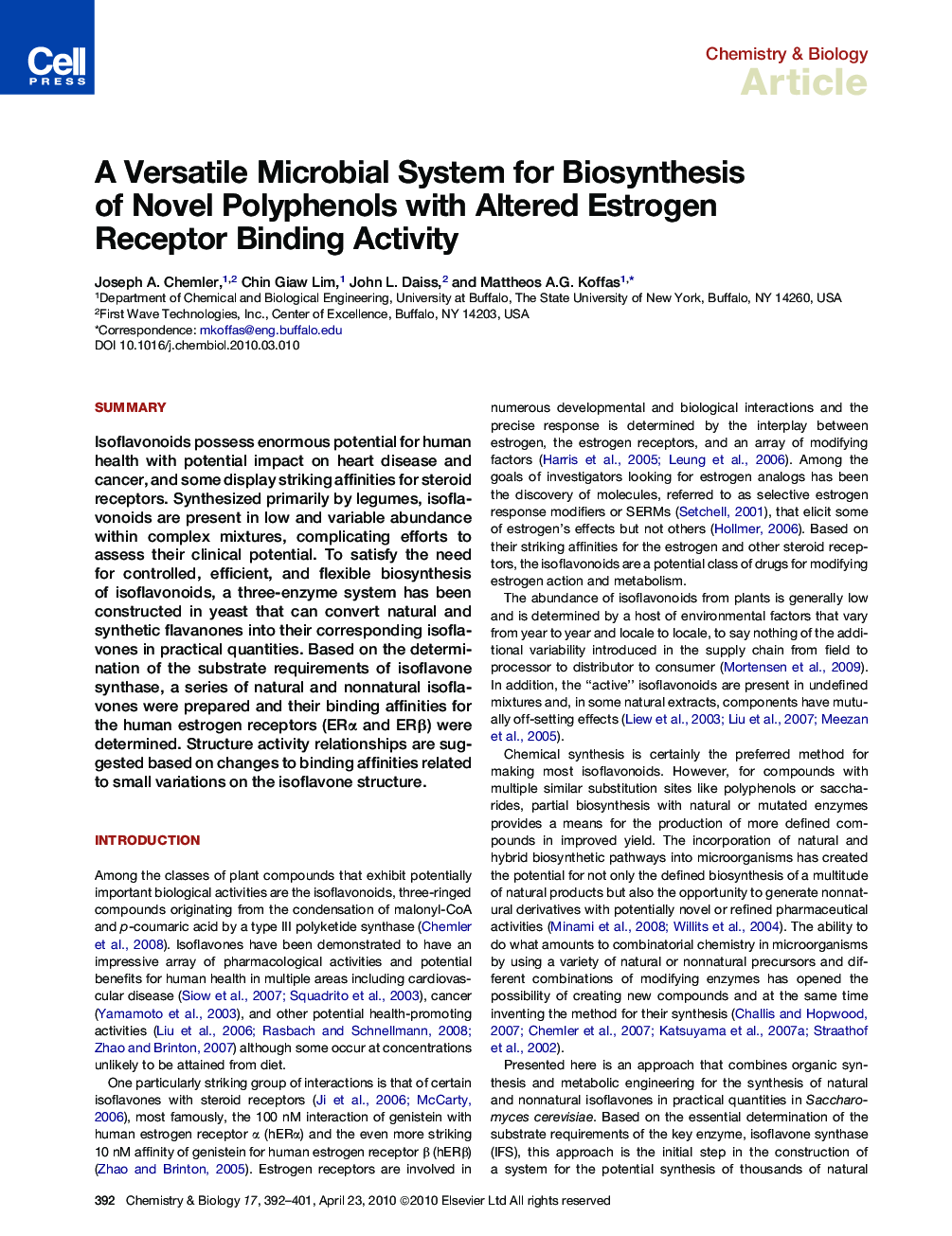| Article ID | Journal | Published Year | Pages | File Type |
|---|---|---|---|---|
| 1392539 | Chemistry & Biology | 2010 | 10 Pages |
SummaryIsoflavonoids possess enormous potential for human health with potential impact on heart disease and cancer, and some display striking affinities for steroid receptors. Synthesized primarily by legumes, isoflavonoids are present in low and variable abundance within complex mixtures, complicating efforts to assess their clinical potential. To satisfy the need for controlled, efficient, and flexible biosynthesis of isoflavonoids, a three-enzyme system has been constructed in yeast that can convert natural and synthetic flavanones into their corresponding isoflavones in practical quantities. Based on the determination of the substrate requirements of isoflavone synthase, a series of natural and nonnatural isoflavones were prepared and their binding affinities for the human estrogen receptors (ERα and ERβ) were determined. Structure activity relationships are suggested based on changes to binding affinities related to small variations on the isoflavone structure.
► Optimized three-enzyme, yeast-based production system yields novel isoflavonoids ► Substrate requirements for key enzyme isoflavone synthase are determined ► Isoflavone binding requirements for estrogen receptors are partially determined
